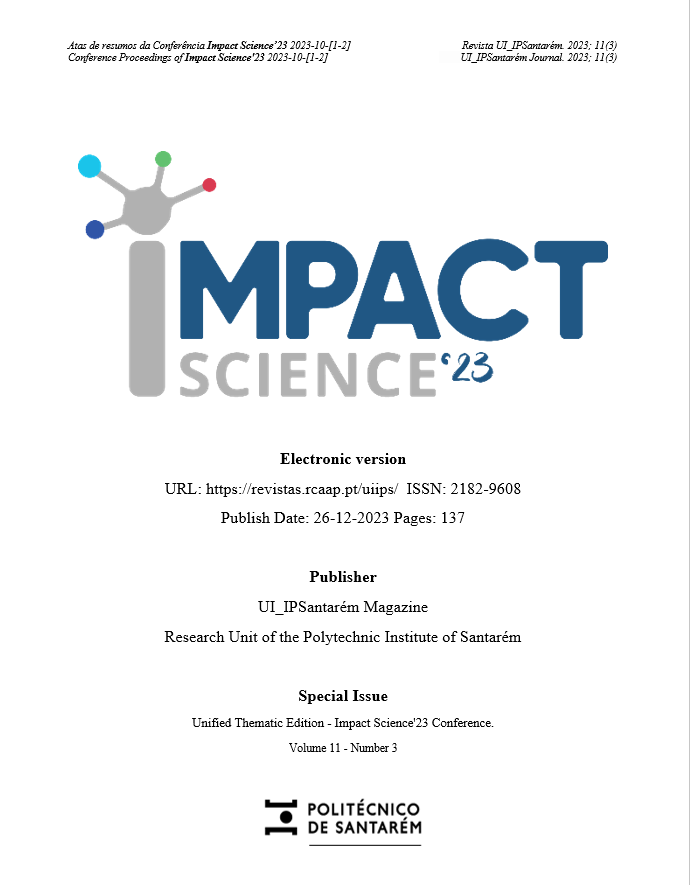Evaluation of 'rocha' pear clones: a contribution
DOI:
https://doi.org/10.25746/ruiips.v11.i3.32541Keywords:
‘Rocha’ pear tree, clones, evaluationAbstract
The Rocha pear tree, identified in Sintra in 1836, occupies more than 90% of the pear tree area in the country. This work is part of the study and selection of more productive clones, with a greater tendency towards parthenocarpy, developed by the Estação Nacional de Fruticultura Vieira Natividade (ENFVN, INIAV), in Alcobaça. It ran from March to September 2022.
The test took place in the Olival Fechado experimental field. The six most productive Rocha pear clones in the last five years were studied (N2, O, 4A, 4C, 6, Without Rump) and the present work concerns the sixth year under evaluation. To evaluate the productive capacity, with and without pollination, 4 modalities were established per clone (control, isolated corymb with bag and castrated flowers, isolated corymb and manually pollinated corymb). In each clone and modality, phenological development, vigor, disease resistance, and fruit quality were studied. Fruit growth was evaluated weekly and through the initial and final measurement of trunk diameter, vigor between clones was compared.
At each stage of phenological development, defined by the BBCH scale, the percentage of existing floral buds and the percentage of fruit set were determined. With the aim of evaluating the quality of the fruit, the height and weight of the fruit, the number of seeds, the hardness, the sugar content and the malic acid content were determined in 10 fruits per type.
We also monitored and evaluated resistance to two important diseases in the ‘Rocha’ pear tree, stenphiliosis and fire blight.
With regard to phenological development, clone 6 was the earliest as it started flowering a week earlier than the others, while clone O was the latest as it was more than a week late in the various phases of phenological development. .
Clone 6 was the one with the greatest trunk growth, appearing to be the most vigorous. Clone 4A was the most productive (41,849 kg/ha) and clone 6 was the least productive (27,911 kg/ha). The clone Without Russet was the one with the lowest presence of leaves with stenphiliasis, which, however, was observed in the fruits.
In relation to the soluble solids content, the clones are divided into two groups, clones N2, O, 6 and Without Scale have a higher soluble solids content (15ºBrix) than clones 4A and 4C 12.5ºBrix. Regarding the hardness of the fruits, in the control, significant differences were observed between the clones, with clone 6 being the one with the lowest average hardness, 4.8 kg/0.5 cm2.
When monitoring stenphiliasis, clone N2 was the one with the highest percentage of leaves with the disease, but it was in the No Russet and 4C clones that more fruits with stenphiliosis were found at harvest. In clone 4A, the monitored fruits did not show stenphiliosis. It was found that clone 4A was the most productive. However, the Sem Carepa clone is the one with the highest accumulated production since 2017.
Downloads
Published
How to Cite
Issue
Section
License
Copyright (c) 2023 Carla Filipe, Rui Sousa, Ana Paulo, Nuno Barba

This work is licensed under a Creative Commons Attribution-NonCommercial-NoDerivatives 4.0 International License.
Authors publishing in this journal agree to the following terms:
Authors retain copyright and grant the journal the right of first publication, with the article simultaneously licensed under the Creative Commons Attribution License that allows sharing of the work with acknowledgement of authorship and initial publication in this journal.
Authors are permitted to enter into additional contracts separately for non-exclusive distribution of the version of the article published in this journal (e.g., publish in an institutional repository or as a book chapter), with acknowledgment of authorship and initial publication in this journal.
Authors have permission and are encouraged to publish and distribute their work online (e.g., in institutional repositories or on their personal webpage) at any point before or during the editorial process, as this may generate productive changes, as well as increase the impact and citation of the published work.



